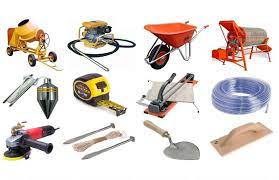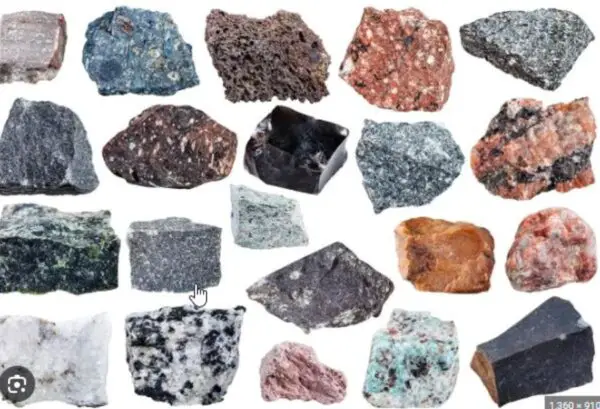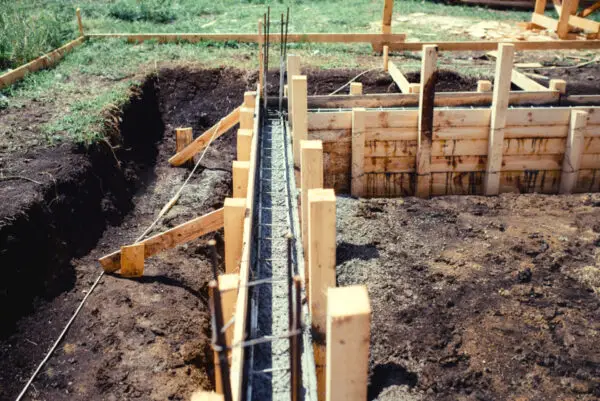Building lifting technology has revolutionized the construction industry by enabling the relocation of entire structures.
This innovative approach involves using hydraulic jacks and a network of steel beams to lift buildings from their foundations, allowing them to be moved to new locations or raised to accommodate additional floors.
The process requires careful planning, engineering expertise, and precise execution to ensure the structural integrity of the building throughout the lift.
By preserving historical buildings, creating space for new infrastructure, and adapting to changing urban landscapes, building lifting technology offers a sustainable and cost-effective alternative to demolition and reconstruction.
House Lifting Equipment
House lifting equipment is a specialized set of tools and machinery used to elevate and relocate entire structures, including residential homes, commercial buildings, and historical landmarks.
The primary components of house lifting equipment include hydraulic jacks, steel beams, and cribbing. Hydraulic jacks, capable of lifting several hundred tons, are strategically placed beneath the structure to provide the necessary lifting force.
Steel beams are then inserted to support the weight of the building and distribute the load evenly.
As the jacks raise the structure incrementally, cribbing, made of stacked timber or steel, is placed underneath to provide a stable base and allow for further lifting.
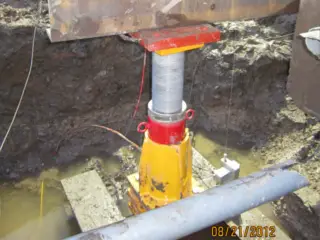
The use of house lifting equipment requires meticulous planning, engineering expertise, and skilled operators to ensure the safety and success of the project.
Whether the goal is to add a new foundation, relocate a house due to land development, or protect a structure from flooding, house lifting equipment plays a vital role in preserving and adapting buildings in an ever-changing urban landscape.
New House Lifting Methods
Recent technological improvements allow house lifting contractors to calculate highly precise lift plans and predictions.
Laser scanning combined with advanced computer modeling informs specialized software to guide trailer placements and synchronize multi-point jack elevations.
Target lift heights can now be achieved within fractions of an inch across the entire footprint, including separate garage, porch, and amenity areas.
These intelligent software platforms result in remarkably level buildings after elevation.
Advance House Lifting
In tandem with dwellings, modern contractors also lift and replace deteriorating foundation systems using ingenious techniques.
Hydraulic push piers installed deep into the ground can raise settled areas to remedy common subsidence problems.
Where flooding is an issue, houses may be raised onto extended piers or pillars to increase the clearance underneath.
Modular and stackable galvanized steel piers are quick to install and cost-effective. Alternatively, reinforced concrete or helical steel pillars drilled deep into bedrock provide robust structural supports.
House Raising Equipment
House lifting relies on a synchronized system of modular heavy duty steel beams, specialized jacks and pumps, and precise digital monitoring.
Beams with hydraulic jacks are carefully positioned under floors, while layers of cribbing temporarily support the structure.
Operators use digital master controls to exactly synchronize multiple jacks operated by high-pressure hydraulic pumps.
Laser guided sensors feed data back to the software, enabling each jack station to apply calculated lifts for smooth and level progress.
House Shifting Technology
House shifting technology has transformed the way we approach building relocation and preservation. This innovative process involves using specialized equipment, such as hydraulic jacks, steel beams, and dollies, to lift a structure from its foundation and move it to a new location.
The technology allows for the careful planning and execution of the shift, ensuring the structural integrity of the building remains intact throughout the process.
House shifting is often employed when a structure needs to be moved due to land development, infrastructure projects, or to protect it from environmental hazards like flooding.
It also provides a sustainable alternative to demolition, as it preserves the building and its historical significance.
With the help of skilled professionals and advanced technology, house shifting has become a viable solution for many homeowners and communities looking to relocate or safeguard their properties, offering a cost-effective and environmentally friendly approach to building preservation and adaptation.
State-of-the-Art Dwelling Lifting Equipment
Specially Designed Hydraulic Jacks
Custom fabricated steel jack heads cradle undersides of floor joists while their vertical hydraulic rams apply tonnes of calibrated lift force.
Large jacks for whole house elevation can have over 20 tonnes load capacity each.
Digital Master Controls
These advanced panels connect wirelessly to all jacks to control hydraulic pumps and perfectly coordinate incremental lifts.
Laser guidance detects any deviation, automatically adjusting individual stations as required.
Modular Cribbing Systems
Blocks, beams, and wedding cakes made from hardwood or steel slots together to temporarily support houses at various heights during lifting. They prevent sudden drops by securing the structure as jacks rearrange.
Pros and Cons of House Lifting
Advantages of House Lifting:
- Preservation: House lifting allows for the preservation of historical buildings and structures that would otherwise be demolished due to land development or environmental hazards.
- Flood Protection: Elevating a house can protect it from flooding, reducing the risk of water damage and ensuring the safety of its inhabitants.
- Foundation Repair: Lifting a house enables easier access to the foundation for repairs or replacement, without the need for extensive excavation.
- Increased Space: Raising a house can create additional living space or storage area underneath, adding value to the property.
- Cost-Effective: House lifting is often more cost-effective than demolishing and rebuilding a structure from scratch.
Disadvantages of House Lifting:
- Complex Process: House lifting is a complex process that requires specialized equipment, skilled professionals, and careful planning, which can be time-consuming and costly.
- Risk of Damage: Despite careful execution, there is always a risk of damage to the structure during the lifting and moving process.
- Permit Requirements: House lifting projects often require permits and approvals from local authorities, which can be a lengthy and bureaucratic process.
- Utility Disconnection: Prior to lifting, all utilities must be disconnected, which can be inconvenient for homeowners and may result in additional costs.
- Weather Dependent: House lifting projects are weather dependent, as high winds, rain, or extreme temperatures can delay or halt the process.
Advanced Residential Building Raising Machinery
The scale of house lifting machinery distinguishes domestic elevations from commercial counterparts.
Specialized equipment must traverse residential yards to install jacks under floors and manipulate substantial dwellings with extreme care.
All-Wheel Steer Trailers
These unique trailers excellently maneuver jack stands into confined spaces using all wheels steered via remote control.
They can turn 360 degrees in their own footprint.
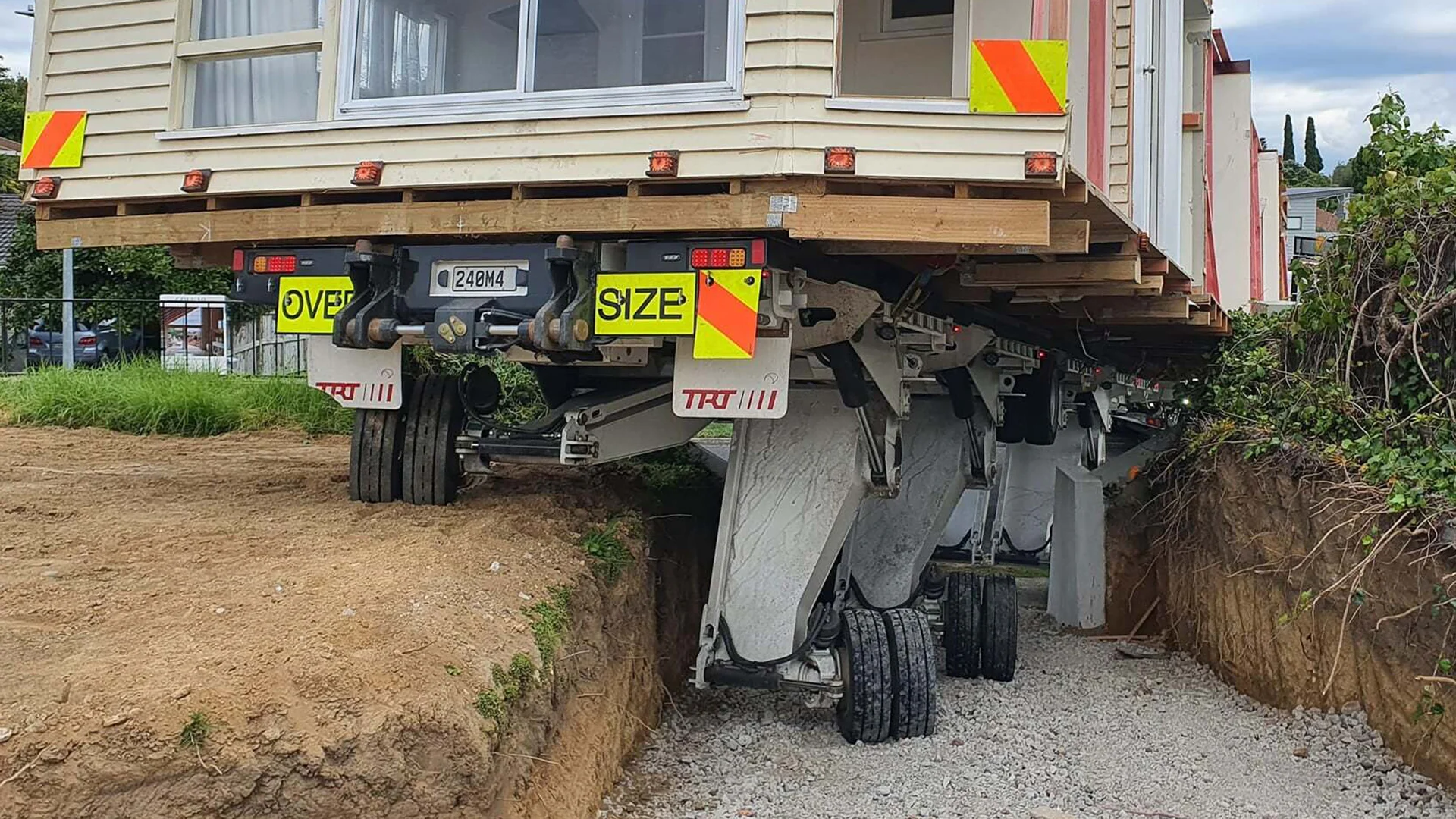
Tractor Side Booms
Fitted with tilting forks, these compact four-wheel-drive tractors carefully reposition heavy steel beams inserted underneath houses.
Operators view hard-to-see areas with remote video systems.
Vacuum Lifting Pads
Powerful suction pads grip flooring to detach sections for jack access, before precisely replacing them afterwards. This avoids damaging dwellings during preparation and completion.
FAQ – House Raising Technique
What is house lifting technology?
House lifting technology involves using specialized equipment, such as hydraulic jacks and steel beams, to elevate a structure from its foundation, allowing for repairs, relocation, or the addition of new levels.
Why would someone need to lift their house?
Common reasons for house lifting include protecting the structure from flooding, repairing or replacing the foundation, creating additional living space, or relocating the building due to land development or environmental hazards.
Is house lifting safe for the structure?
When executed by skilled professionals using the appropriate equipment and techniques, house lifting is generally safe for the structure. However, there is always a minor risk of damage during the process, which is why careful planning and execution are crucial.
How long does the house lifting process take?
The duration of a house lifting project depends on various factors, such as the size and complexity of the structure, the reason for lifting, and weather conditions. On average, the process can take anywhere from a few days to several weeks.
Is house lifting an expensive process?
The cost of house lifting varies depending on the project’s scope, the structure’s size, and the required materials and labor. While it can be a significant investment, house lifting is often more cost-effective than demolishing and rebuilding a structure from scratch, especially when considering the added value and benefits it provides.
Modern Approaches for Structure Elevation
House lifting is advancing from traditional step-by-step jacking to newer continuously synchronized elevation.
Hydraulic pumps pressurize entire jacking systems simultaneously, enabling smooth lifts without deviations across foundations.
Another emerging technique is water injection slab lifting, where concrete slabs are carefully raised by injecting expanding polyurethane underneath. While less disruptive, the elevation potential is lower than conventional house lifting.
Recent Developments in Building Raising Hydraulics
Hydraulic systems powering modern house lifts generate extremely high fluid pressures up to 10,000 psi.
This allows more jacks exerting greater force in confined areas under floors.
High density polyethylene hydraulic hoses withstand tremendous pressures, yet remain highly flexible for stretching jack cylinders. They are also more abrasion resistant around beams.
Advanced hydraulic pumps enable faster elevation speeds. Using multiple synchronized pumps connected to all jack stations saves significant project time.
Creative Techniques for Raising Homes
Elevating with Residents Inside
With precision digital controls, house lifting systems are now advanced enough to carefully elevate occupied family homes without disruption.
Hydraulic jacks slowly raise floors and utilities together.
Effective Water Management
Site dewatering techniques like water bladders prevent flooding of subterranean work areas during wet conditions, allowing house lifting projects to proceed where not previously possible.
Temporary Access Solutions
Scissor lifts or modular stairs on wheels provide resident access to front doors elevated well above ground. Custom ramps can also be installed if required.
Novel Systems for Lifting Households
Rotatable Jacking Beams
Hinged jacking beams that pivot and flip underneath houses allow jack positioning in extremely confined sites between closely spaced dwellings. Any remaining gaps gets filled by temporary structural spacing.
Interlocked Hydraulic Circuits
Connecting multiple hydraulic pumps enables larger systems to coordinate lifts across larger, heavier buildings. It also provides redundancy if any pumps require service.
Angled Screw Jack Pedestals
Permanent screw jacks on adjustable bases lift and realign concrete floor slabs. They replace degraded piers or accommodate odd angles.
Original Approaches to Elevating Houses
Hydrodemolition Concrete Removal Under Occupied Houses
Highly targeted water jets erase deteriorating basement walls or foundation piers without vibration, dust, or debris. It facilitates new poured walls or modular piers to lift and resupport homes.
Computer Numerically Controlled House Lifting
By fully automating elevations under computer control, advanced robotic systems accurately lift whole houses to precise heights automatically. Human judgement gives way to sophisticated software for increased consistency.
Heavy Duty Structurally Insulated Wall Panels
Prefabricated for rapid underfloor installation, these foam core structural panels spanning onto new foundations instantly create weathertight underfloor spaces after lifting. Residents can remain occupying their homes above.
Conclusion
House lifting is an extremely specialist discipline, which recent technologies have refined considerably.
Improved structural modeling, digital elevation control, and clever hydraulic systems facilitate smooth and highly precise elevations.
Cutting edge methods like continuously synchronized lifting, hydrodemolition concrete removal, and computer-controlled automation enable fast, minimally disruptive projects with fantastic accuracy.
These techniques open up house lifting possibilities to more residential buildings than ever before.
With weather events worsening and urban flooding increasing globally, more homeowners will likely investigate raising their properties as insurance or forced by regulations.


